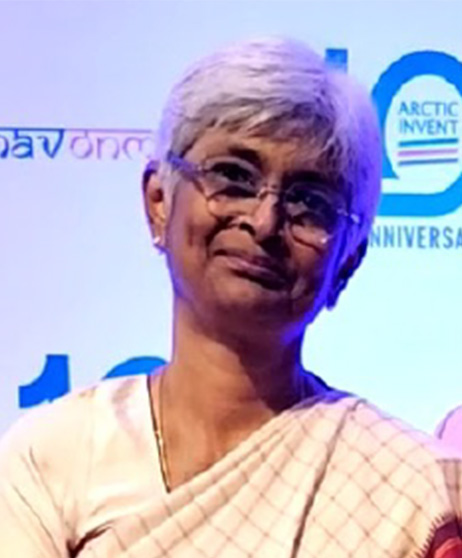A Closer Look at Patent Registration Strategies

This is an Insight article, written by a selected partner as part of WTR's co-published content. Read more on Insight
Introduction
Any framework designed to safeguard intellectual property aims to achieve two basic economic objectives:
- to establish exclusive rights to use and market newly developed technologies, products and services to encourage investments in knowledge development and commercial innovation; and
- to encourage or mandate rights holders to commercialise their ideas to advance the wide diffusion of new information.
India is an emerging global hub for research and development. With a rich history of science and innovation, India has, over the decades, crafted a unique patent framework. Given the nation’s current trajectory in technological development, understanding its patent landscape is crucial for businesses, inventors and policymakers alike.
The development of a knowledge economy, the support of the start-up environment, technological innovation and scientific research all depend on an effective intellectual property regime.
In the last reporting year, India saw a 13.57 per cent uptick in patent filings as compared to 2020–2021, with domestic applications making up 44.41 per cent of the total –up from 41.58 per cent in the previous year.1 Over the past seven years, patent filings have surged by over 50 per cent, and patent grants increased five-fold just between 2021 and 2022.2 This growth spans multiple sectors, notably in tech fields such as computer science, electronics and engineering.
For the first time in over a decade, more Indians than multinational companies are filing for patents. As per the Indian Economic Service, the proportion of Indian applicants has doubled in the past 10 years, jumping from 20 per cent in 2010–11 to 44 per cent in 2021–22. In the final quarter of 2021–2022, domestic patent filings surpassed those from non-Indians.2
Changes in the patent process over the past five years have fuelled these recent gains, catapulting India’s Global Innovation Index rank from 81st to 40th.3
Despite progress, India lags behind global leaders like China, the United States, Japan and Korea, accounting for just 3.8 per cent of all patent filings in 2020. In 2020, China led with 1.5 million patent filings, dwarfing the US’s 597,000. They were followed by Japan, Korea and the European Patent Office with 288,000, 227,000 and 180,000 applications, respectively. The top five collectively accounted for 85.1 per cent of applications globally, a 7.7 per cent increase from their combined share in 2010.4
India’s booming economy and vast markets influence patent plans.
Consider the following:
- Market size and consumer base: India’s large, diverse population encourages R&D investment and innovation, as companies aim to meet local needs. Patenting for the Indian market can offer a competitive edge.
- Competitive landscape: India’s growing economy attracts global and local firms, heightening competition. Patent protection becomes key to avoid copycats and keep market exclusivity.
- Innovation and R&D: India’s economic growth often boosts R&D investment, leading firms to patent in growing sectors like IT, pharma, biotech and renewables.
- Licensing and collaboration: India’s market growth opens doors for local partnerships. Licensing or teaming up can help tap into this market while safeguarding IP rights.
- Counterfeiting and piracy: rapid economic growth can increase counterfeiting risks. Strong patent plans are vital to defend brand and market share.
- Global expansion: India’s economic growth attracts international business interest, making international patent protection crucial for safeguarding innovations in India and multiple key markets.
- Policy and regulatory changes: India’s shifting economy can bring new IP laws. Keeping current is key for adapting patent strategies.
- Cost considerations: India’s affordable R&D can shape patent plans. Innovators may opt for local R&D while filing patents for protection globally.
- Market entry timing: timing matters for capturing markets. Filing patents should align with product launches or market entry for optimal protection.
Businesses and innovators need tailored strategies that consider India’s unique market conditions and economic shifts while aligning with their business goals.
| Comparison of patent strategy under the influence of economic growth and market potential of the European Union and the United States with India | ||
|---|---|---|
| India | European Union | United States |
| Market potential: India offers a vast and rapidly growing market, which can incentivise companies to focus on patenting innovations tailored to the local market. | Regional protection: the EU offers a unified patent system, with the European Patent Office (EPO) and the unitary patent allowing businesses to protect their inventions across multiple EU member states with a single application. | Innovation hub: the US is a global innovation hub, with a strong emphasis on R&D and technological advancements across various industries. |
| Cost efficiency: India’s lower R&D and patent filing costs can make it attractive for companies to conduct research and file patents locally while considering global protection | Highly developed economy: the EU is a mature and affluent market, making it attractive for companies to invest in R&D and innovation for both local and global markets. | Patent-friendly environment: the US has a patent-friendly legal environment and a strong tradition of patent protection, making it a preferred destination for patent filing. |
| Complex regulatory environment: India’s nuanced patent laws and regular policy updates require businesses to craft innovative and adaptive patent strategies. | Strong IP protection: the EU has robust intellectual property protections and a well-established legal framework for patent enforcement, providing companies with a high level of confidence in their patent rights. | Stringent examination: the US Patent and Trademark Office (USPTO) conducts rigorous patent examinations, ensuring the quality and validity of granted patents. |
| Challenges with enforcement: enforcement of patent rights in India can be challenging, with issues related to litigation timelines and potential infringement risks. | Global export hub: many EU countries are known for their exports and global reach, making it important for businesses to consider international patent strategies. | High litigation activity: the US also has a relatively high level of patent litigation, which influences patent strategies, as companies may need to defend their patents in court. |
India strategies may be shaped by its emerging market status, cost-effectiveness and unique regulatory challenges. In contrast, the EU and the US benefit from well-established IP ecosystems and more mature markets, which can affect the focus and scope of patent strategies. Companies often tailor their patent strategies to align with the specific opportunities and challenges presented by each region.
Patentability criteria demystified
India’s patent laws and regulations include several key aspects that impact patentability criteria determining whether an invention can be granted a patent in India.
Listed are the key aspects of India’s patent laws and regulations that influence patentability:
- novelty (new invention) (section 2(1)(l));5
- inventive step (section 2(1)(ja));5
- industrial applicability (section 2(1)(ac));5
- subject matter eligibility (section 3);6
- subject matter eligibility (section 4);7
- exemptions for software and business methods (section 3(k));6
- sufficiency of disclosure (section 10(4));8
- filing requirements (section 7 and 8);9,10
- priority claims (section 138);11
- patent examination and opposition (sections 11 and 25);12,13
- term of patents (section 53);14
- compulsory licensing (section 84);15 and
- parallel imports certain acts not to be considered as infringement (not limited to import only) (section 107A).16
Largely patentability criteria aligns well with the UKIPO and the EPO.
The Role of the National Biodiversity Authority
India’s National Biodiversity Authority (NBA) regulates patents related to biological resources and associated traditional knowledge with the aim to protect local biodiversity while ensuring fair benefit sharing.17
Listed is an overview of the process of the NBA:
- check if your invention uses bio-resources such as plants, animals, microorganisms or derivatives to know if it falls under NBA regulation;
- make sure your R&D or business activities follow India’s Biological Diversity Act of 2002 and its related rules;
- get prior informed consent from the state’s biodiversity management committee or local body if your work involves using bio-resources;
- negotiate an ABS agreement for terms of access, benefit-sharing mechanisms and any mutually agreed benefits when using bio-resources and related knowledge;
- apply to the NBA for bio-resource and associated knowledge access, including in your application resource details, ABS agreement info and any other NBA-required docs;
- the NBA reviews your application and may grant permission if it aligns with ABS rules;
- fulfil your ABS agreement terms, which could involve payments, tech transfers or local community support;
- send NBA regular reports or updates on your activities, such as research, commercialisation and benefit-sharing;
- for extensions or project changes, submit renewal or amendment forms to the NBA; and
- non-compliance risks penalties like patent loss or legal action under the Biological Diversity Act and ABS rules.18
It is imperative that patents that are referencing biological resources check the NBA processes.
Software-related inventions
In India, the domain of software or computer-related inventions (CRIs) patenting is nuanced and surrounded by specific criteria. The evolution of CRI guidelines and jurisprudential interpretations has paved the way for a more defined pathway for patenting software.19
Detailed exploration
For a software to be patentable in India, it must demonstrate technical progression or effect.
A mere digital transformation of a business method is insufficient for patent eligibility.
The term ‘technical effect’ remains undefined in the 2017 CRI Guidelines. However, references from the 2013 Draft CRI Guidelines provide clarity, citing examples such as ‘enhanced hard drive access speed, optimal memory usage, efficient data compression, and an advanced user interface’.
Section 3(k) of the Indian Patent Act delineates exclusions from patentability, which includes ‘mathematical or business methods, computer programs per se, or algorithms’.
Interpretatively, while stand-alone computer programs are not patentable, those with a technical effect can qualify for patent protection.
The 2022 judgment in the case of Ferid Allani and Others v Union of India and Others (2022 SCC OnLine Del 1701) became a cornerstone for CRI jurisprudence.
Considerations include the invention’s technical contribution, novelty, inventive step, industrial application and economic impact.
The Indian Supreme Court’s stance resonates with the patentability standards for software-related inventions in global jurisdictions such as the European Union and the UK.
The Ferid Allani case judgement has clarified rules for patenting software in India, aligning it with global standards. This makes it easier for innovators to effectively protect their tech intellectual property and highlights the need for innovators to understand the details to effectively protect their creations.
Expedited examination strategies
In India, patent reviews can sometimes take years owing to the backlog, but faster options exist for quicker decisions.
Below are some options to expedite patent examination in India.
Request for expedited examination
The most common way you can request an expedited examination of your patent application is under Rule 24C of the Indian Patents Act 1970.20
To request an expedited examination, submit Form 18A along with the required fees.21
These are conditions under which an expedited examination can be requested:
- if India is designated as the international searching authority or the international preliminary examining authority in a corresponding Patent Cooperation Treaty application;
- if the applicant is a start-up (as defined by the government) or a small entity;
- if there is a national emergency or if the Controller of Patents deems it expedient to expedite the examination;
- if the applicant or one of the applicants is female; or
- if the applicant is a department of the government or wholly or substantially financed by the government.
Foreign entities can also claim this benefit by providing relevant evidence to help them qualify for start-ups and avail this benefits.
Patent Prosecution Highway
In 2019, the Indian Patent Office (IPO) and the Japan Patent Office have started a Patent Prosecution Highway (PPH) pilot programme. The Controller General of Patents, Designs and Trade Marks has publicised the guidelines on its website.22
The procedure mandates the submission of documents to the Office of Later Examination (OLE), after fulfilling criteria set by the Office of Earlier Examination.
For participation in the PPH, details should be submitted as per the form in Chapter 5 to the OLE.
PPH requests to the IPO are capped at 100 cases yearly, based on the first-come-first-serve principle.
A single applicant can’t exceed 10 PPH requests to the IPO per annum.
Understanding foreign filing licences
Consider a multinational corporation with a thriving R&D centre in Bangalore. They develop a groundbreaking technology with both local and foreign talents. While the Indian market’s potential remains vast, they identify a greater market share in Europe. To navigate this, they would require a foreign filing licence (FFL) from India before filing a patent in Europe, ensuring transparency and adherence to India’s national interests.
Navigating the patent landscape is not without its hurdles. One challenge is the potential consequence of violating section 39 of the Act. Without obtaining an FFL, Indian residents risk application denial and might incur fines if they file abroad. This presents a substantial barrier for uninformed inventors.23
Third-party opposition in India
The Indian patent framework provides mechanisms for third parties to challenge patent applications or granted patents, ensuring that only genuine innovations receive patent protection. The two mechanisms employed are pre-grant and post-grant oppositions, each serving its unique purpose in maintaining patent integrity.
Pre-grant opposition
This aims to prevent the grant of patents that do not meet the necessary criteria for patentability and is governed by section 25(1) of the Indian Patents Act 1970.
They can be filed by individuals, companies and organisations, and these oppositions must be filed after the patent application’s publication but before its grant. (Typically, patent applications are published within 18 months of the earliest filing or priority date, but exact timelines may vary).
They act as a checkpoint, ensuring only deserving inventions are patented, while facilitating third-party interventions against patents that may curb innovation or competition.
Post-grant opposition
This aims to allow for the challenging of already granted patents, questioning their validity based on patentability or other grounds. It is governed by section 25(2) of the Indian Patents Act 1970.
They can be filed by any entity, be it individuals, companies or organisations, and these oppositions must be filed within one year of the patent’s grant publication date in the Indian Patent Journal. Oppositions after this duration are disregarded.
They ensure maintenance of patent quality by offering a window for third par-ties to challenge patents that might not truly deserve protection.
The Indian patent system, through pre-grant and post-grant oppositions, ensures a rigorous screening of patent applications and grants. By offering third-party intervention, it ensures that only deserving inventions receive patent protection, preserving the integrity of the patent landscape. This structured approach echoes the system’s commitment to fostering genuine innovation and preventing unwarranted monopolies.
Expected rule changes
The Indian government’s Patent Draft Amendment Rules 2023 proposes the following alterations to the Patents Rules 2003, aiming to enhance the patent application process’s efficacy in India:
- a decrease in the request for examination (RFE) timeline from 48 months to 31 months to accelerate the patent examination process;
- introduction of provisions for voluntary filing of divisional applications without dependence on previous rejections, so that greater application flexibility for patent protection is offered;
- mandated disclosure of details for all foreign filings concerning the same or essentially similar inventions, irrespective of their filing sequence. This is to avoid potentially bypassing Indian patent laws via prior foreign applications;
- giving permission to the controller to utilise publicly accessible databases for information on patent processing in foreign nations;
- enhancing clarity regarding patent application abstract requirements; and
- giving six months’ grace for restoration requests for forsaken patent applications.
Public participation: current draft rules are open for public feedback, with final rules to be issued post review of these comments.24
Implications for patent applicants
- Prompt action required: the curtailed RFE timeline necessitates early application preparations.
- Increased patent protection flexibility: with divisional applications, complex applications can be segmented, or varied invention facets can be distinctively protected.
- Foreign applications scrutiny: the emphasis on foreign filings disclosure necessitates vigilance in initial foreign applications before Indian application filing.
The Patent Draft Amendment Rules 2023 primarily seek to elevate the Indian patent application process’s efficiency. For prospective patent applicants, while the draft rules promise improved operational efficiency, it’s imperative to stay updated and strategise in accordance with these impending changes.
Conclusion
India’s patent landscape, rich in its nuances, reflects the nation’s commitment to innovation and its pivotal role in the global R&D ecosystem. A well-informed, collaborative approach will ensure that India continues its trajectory as a global leader in innovation, balancing the interests of inventors, businesses and the public at large. To anyone aiming to innovate in India, understanding this landscape is not just beneficial, it’s imperative.
Footnotes
1 https://ipindia.gov.in/writereaddata/Portal/Images/pdf/Final_Annual_Report_Eng_for_ Net.pdf.
2 https://pib.gov.in/PressReleasePage.aspx?PRID=1815852.
3 https://pib.gov.in/Pressreleaseshare.aspx?PRID=1863536#:~:text=Union%20Minister%20 for%20Commerce%20and,time%20the%20ranking%20was%20done.
4 https://www.ies.gov.in/pdfs/why-India-needs-to-urgently-invest-in-its-IPR-ecosystem- 16th-Aug-2022.pdf.
5 https://ipindia.gov.in/writereaddata/Portal/ev/sections/ps2.html.
6 https://ipindia.gov.in/writereaddata/Portal/ev/sections/ps3.html.
7 https://ipindia.gov.in/writereaddata/Portal/ev/sections/ps4.html.
8 https://ipindia.gov.in/writereaddata/Portal/ev/sections/ps10.html.
9 https://ipindia.gov.in/writereaddata/Portal/ev/sections/ps7.html.
10 https://ipindia.gov.in/writereaddata/Portal/ev/sections/ps8.html.
11 https://ipindia.gov.in/writereaddata/Portal/ev/sections/ps138.html#:~:text=(1)%20 Where%20a%20convention%20application,the%20patent%20office%20of%20the.
12 https://ipindia.gov.in/writereaddata/Portal/ev/sections/ps11.html.
13 https://ipindia.gov.in/writereaddata/Portal/ev/sections/ps25.html.
14 https://ipindia.gov.in/writereaddata/Portal/ev/sections/ps53.html.
15 https://ipindia.gov.in/writereaddata/Portal/ev/sections/ps84.html.
16 https://ipindia.gov.in/writereaddata/Portal/ev/sections/ps107.html.
17 http://nbaindia.org/uploaded/docs/biological-diversityact-ii.pdf.
18 http://nbaindia.org/content/16/14/1/introduction.html#:~:text=The%20Biological%20 diversity%20Act%20(2002,benefits%20arising%20out%20of%20the.
19 https://ipindia.gov.in/writereaddata/Portal/IPOGuidelinesManuals/1_86_1_Revised Guidelines_for_Examination_of_Computer-related_Inventions_CRI__.pdf.
20 https://ipindia.gov.in/writereaddata/Portal/ev/rules/pr24C.html.
21 https://ipindia.gov.in/form-and-fees.html.
22 https://ipindia.gov.in/newsdetail.htm?593
23 https://ipindia.gov.in/writereaddata/Portal/ev/sections/ps39.html







